#game production
Text

Bayonetta design sketches by Kenichiro “Yoshi” Yoshimura (thanks @cadaver245 for the correction!! ^ _^), made as he was working out her 3D model for the first game:
"Bayonetta’s face: She is really attractive, yet dangerous, so I wanted to get that across without over-doing it. She is beautiful, but she can’t be pandering. Those sorts of things are really hard to pull off, let me tell you. So I would draw some sketches as I worked and eventually arrived at a final design as I was modeling."
#bayonetta#character design#character designs#sketch#sketches#drawing#drawings#video games#games#kenichiro yoshimura#game production
451 notes
·
View notes
Text
On Scoping And Idea Management for Games
I started my teaching gig (which is incredibly chaotic but I'm very much enjoying it despite that) and I noticed a really consistent theme with some student project pitches around the idea of planning and scoping projects. Some advice that I gave them that I think is worth repeating and reinforcing here:
You are not a AAA studio. Do not plan to make games like a AAA studio.
If your concept, premise, pitch or idea of a game that you actually want to finish contains elements, mechanics or concepts that is predominantly executed by AAA studios, please for the love of god don't expect to be able to execute them without brutally interrogating them first.
Things like: Soulslike game balance, 'open world', heavily systemic design, online multiplayer, complex mechanics, etc. You know, things you largely only see AAA studios (or very experienced dev teams) complete with any semblance of success. There's a reason many of these are only executed by large teams.
This isn't to say it's impossible to execute on these ideas or that it's not worthwhile experimenting with it a little, but if you're going into it with little previous development experience and expect to come out the other end with a 'finished' thing, you're overscoping and setting yourself up for failure.
Ever notice how AAA studios even struggle to execute complex concepts like that? It's not (always) because of mismanagement, but also because it's often overscoped for them too and they are incredibly hard to execute. AAA studios often work on concepts and premises which require a lot of resources to do so effectively. Indie studios don't often make these kinds of games for the same reasons, because conceptually it will easily explode your scope out of the water. Some try, and you can often feel how stretched thin they were.
The point is, you (assuming as a reader that you're an individual with no 'fully' shipped titles) are equivalent to...basically 1/2 a person at an average indie startup. If you have a team, then you're basically the size and scale of a small indie team. Realistically, in all likelihood, you do not have the knowledge, experience or time to do it anywhere nearly as well as a full-time studio production.
And I get why people fall into this trap!
We draw inspiration from what we see most and what we like, and don't often challenge our assumptions about them - it's why we see something like a Batman Arkham Asylum combat system or Photorealistic graphics and say "yeah I could do that easy" without realizing it's actually really really hard to do in the first place, let alone really get right. Studios are notoriously secretive about process, and the reality is there's months and months of unseen work behind pretty much everything.
We also tend to use blanket terms we're familiar with to define our works, as opposed to more fitting terms. For example, some people might call something like Journey an "open world" game, despite the fact it's not strictly an "open world" but rather a linear one with a non-linear presentation.
As a solo developer I too constantly make this mistake of over-scoping or underestimating just how hard it can be to execute on certain concepts or ideas.
Avoiding It
So how do you get around accidentally writing cheques only well-equipped studios can cash? You need to interrogate your ideas a lot more.
Okay, now ask yourself: Is it mostly a premise that is done by people operating at around your level of resources, or by dedicated groups with tons and tons of employees? Has anyone done your mechanic at a small, simple scale? How many studios have done it? What size were they? How many resources do they have? If anyone has executed a similar idea, how many resources did they seem to have to do it? What corners did it seem like they need to cut to get there? Ask yourself how often you see concepts like yours, executed at scale like yours. Ask yourself why that might be.
A generic example to run with: "I am going to make an open world exploration game where you can climb anywhere, with tons of content and things to do".
Ask yourself some of the above questions, and also interrogate all your definitions. What do you define as "open world"? "exploration"? "tons"? "anywhere"? "Climb"? What do these words, specifically, mean to you? Are these reasonable and realistic expectation for the amount of time you have for this project? Have you already executed on any of these before, and how many are unknown to you?
"But Devon, my idea is unique and no one has done it before! I have nothing I can compare it to!"
Nope. Sorry, just no - you're wrong. Maybe they've not done it exactly like you envision it, but I promise you that at this point in time someone has done virtually everything in games before, you've just not heard of it yet. I have yet to hear someone describe a game that didn't do anything I hadn't heard of before to some degree or another. Ask some friends for references and take more time to do research - you'll find parallels if you dig enough.
Execution
If by now you've realized you might be in over your head, you might still be able to do it if you plan very smartly around it and accept scoping down.
I could talk forever about how to break down your scope into something that is more manageable (and probably will in the future), but I'll keep it focused on this idea of interrogating definitions for now.
Running with the "open world exploration game where you can climb anywhere, with tons of content and things to do" example.
Plan to do only one of the verbs in your game really well.
"Climbing" - you could spend forever building a game just around that verb, and people have! Getting Over It With Bennet Foddy. Doodle Jump. Grow Home. People have done this, and even those games tow the line of being complex to make.
"Open world" - this one is very heavy, but make it just about walking around. Challenge the assumption that an open world isn't enough and that it needs 'content' - just make walking around the world really fun. Dear Esther, Proteus, Passage, Beginner's Guide.
"Exploration" - this verb is vague and takes many forms, and while it can easily be dangerous if it gets too big, it can still be small and engaging. A Short Hike, Umurangi Generation, Hidden Folks. You don't need mechanical complexity or depth to make something fun.
Start from that and then expand. Maybe you get to a point where your climbing is really fun and good and you don't even need to add tons of things to do, or open-world mechanics. Maybe your open world is so easy to do that climbing becomes the thing you spend your time on.
---
Essentially the point here is to not assume that because you've seen something done before it's easy to execute on, nor that you should simply run with concepts without fully understanding what you mean when you come up with them first. It's going to not only save you a lot of time and stress, but also more likely to put you in a position where you'll be able to actually finish what you started.
This is also only the tiniest portion of my thoughts on scoping here, so I'm sure I'll add more to this down the road. :)
#gamedev#game development#game dev#indie games#indie game#gamedevelopment#indiegames#indie dev#indiedev#thoughts#advice#production#game production
174 notes
·
View notes
Note
Lately I’ve noticed a bit of, let’s call it pushback, against the upcoming release of Baldurs Gate 3 and Larian Studios, by developers and studios alike. From your perspective as a game developer yourself what is this all about? Why are they calling BG3 an anomaly and making it sound like Larian hasn’t earned the praise they are getting? Why all the attempts at what sounds like trying to discredit their work?
The unfortunate truth of the matter is that the discussion I've seen from devs is subject to signal decay when in an environment where the most maddening and viral takes are the ones that get amplified over accuracy or educational takes. The various "hot takes" I've read were traced to the observations of [Xalavier Nelson Jr. about BG3] and I have to say - after reading his original thread, I am very much in agreement with him. Baldur's Gate 3's success is absolutely not a template that can be easily repeated and is very much an anomaly.
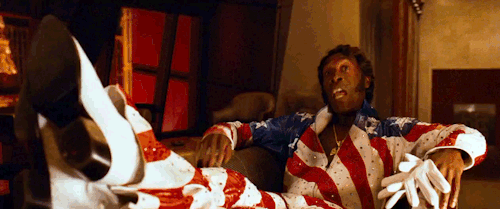
You can tell a lot about a game by the number of developers in the credits and the length of its dev cycle. If you multiply (number of devs) x (months of development) x ($10,000 per month per dev), you get a pretty good estimate of a game's overall budget. BG3 started development in 2017 and had a team of over 300 developers working on it. 300 devs x 72 months x $10,000 = approximately $216 million USD. "Step 1: Secure $200 million in funding to develop your game" is absolutely not a business plan that is feasible for 99.9% of indie developers.

This also goes for other circumstances beyond their control that managed to favor them. Larian was incredibly successful in raising funding during early access, but they are one of a tiny fraction that made it. Larian got incredible word-of-mouth promotion from their fans while thousands of amazing indie titles languish in obscurity on Steam. Larian managed to secure a major license that is extremely well-regarded - not exactly an easy feat to replicate. Each of these various circumstances ended up a win for them and every single one of them was necessary to obtain the success they did.

This isn't to say that Larian doesn't deserve praise for their success - they absolutely deserve all the praise and more. They managed to deliver a fantastic high quality game and I laud them for it. It is a tremendous accomplishment and I am happy for their success. What I will never agree to is saying that this is the path others should follow, because I believe that Larian managed to capture lightning in a bottle. All of the ducks had to line up just right for them to succeed like this, and any of the major factors in their success could have gone very very wrong for them through no fault of their own and sank the project partway through. Larian managed to win and they deserve huge amounts of praise for it, but it is in no way an easily-repeatable formula for success.
[Join us on Discord] and/or [Support us on Patreon]
Got a burning question you want answered?
Short questions: Ask a Game Dev on Twitter
Long questions: Ask a Game Dev on Tumblr
Frequent Questions: The FAQ
194 notes
·
View notes
Text
WE MADE A MOLE GAME?!?!?
Hey you!
Do you remember Mole Interest? We sure do! Moles definitely are of interest to us - I mean look at them.
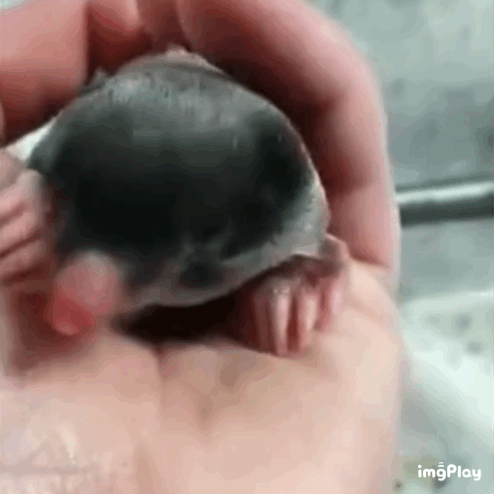
So, we (Plushie Bomb Studios - a team consisting of 18 college students and at least two felines) decided to make...

But like. What IS Molementum?
Molementum is a 3D online party-platformer! Grab up to 3 friends and scramble your way through an industrial mine engaging in various acts of competitive mischief as you try to become the most notorious thief in your squad!
Here's our trailer!
youtube
Download our demo and follow us for updates as we continue making this Moletimate experience!
#molementum#mole interest#mole#game#indie game#video games#game development#game production#indie games#game developers#free game#about us#cute games#mole games#Youtube
5 notes
·
View notes
Text





Finished my 3D realism scifi military character project.
This project is inspired by yuriy mazurkin’s cycle frontier concept art for yager . For bigger and full resolution versions of the videos and images you can visit sansho.artstation.com
I really wanted him to look like he‘s been on a mission for longer. Meaning: dirt in crevices, smeared and dried dirt on face, stained and damaged metal and fabrics and so on…
I gave myself a 5 weeks time limit to work on this. Just to see what I‘d come up with in that time frame. I learned a lot again.
After 5 weeks I am really happy with the result. I hope you like it too.
#sansho art#art#artists on tumblr#3d#3d art#unreal#unreal engine#zbrush#blender#fibershop#scifi#sci-fi#scifi art#science fiction#asian#poc#military#gaming#game production#game art#character art#character creation#character design#shooter#adventure#realism#realism art
28 notes
·
View notes
Text
youtube
The Small Stout Box is a premium packaging option at The Game Crafter. It's fully printed in color on all sides, twice as tall as the Small Pro Box, and strong enough to hold up to your gaming needs.
You can fit a 266 poker cards, 133 jumbo cards, or 10 slugs of small chipboard punchouts with room for 172 poker cards.
Learn more about Small Stout Boxes in our product catalog at https://www.thegamecrafter.com/make/products/SmallStoutBox
#Game Box#Board Game Design#Game Designer#Game Design#Board Games#Tabletop Games#Game Manufacturing#Game production#Print On Demand#Youtube
2 notes
·
View notes
Text
You must have Discord to participate!!!

Game preface:
WELCOME TO | FNAF: FAZBEAR PLAZA | This fan game that we're creating will be focusing on a young (12-15 year old) girl who's father had worked at and old Freddy Fazbear's location from 1999 that is now used as a storage facility for all things Fazbear related.
Due to the fact of it being a warehouse the father was hired to watch over it during the night so it was never robbed. The main character's father passes due to mysterious occurrences.
Years later when the main character is now 20-21 they drive by the old place and out of somewhat pure nostalgia, they walk up and notice that they are still hiring, so she applies and two weeks later she got the job. The main story is under work but we are seeking help for this project cause this is the first time we have ever worked on a fan game. DM ME IF YOU ARE INTERESTED IN HELPING!! I can set you up with the Discord link there!
AGAIN: Discord IS required in order to work on this project.
#fnaf#fnaf fangame#help needed#game production#video games#programming#voice actors needed#five night's at freddy's
19 notes
·
View notes
Text
2 notes
·
View notes
Text
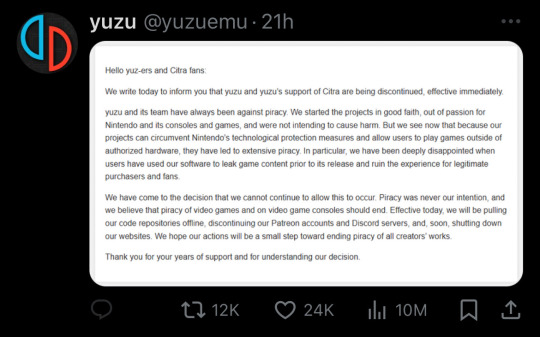
i hope everyone in nintendo’s management department dies and goes to hell no matter what and i’m not kidding
#WERE LOSING YUZU AND CITRA. I DONT KNOW IF YOU ALL UNDERSTAND HOW INSANE THIS IS#game emulation enables piracy yes but it’s also an INCREDIBLY powerful archival tool.#there are plenty of games out there that only exist in their original formats due to emulation.#this lawsuit has HORRIBLE implications for video game history. it makes it incredibly easy for companies to scorched earth their products#if they’re not profitable enough. ART IS GOING TO BE LOST BECAUSE OF THIS. GAMES PEOPLE WORKED INCREDIBLY HARD ON#it won’t just happen to bad games. it won’t just happen to old games. they will use this to keep their remake/virtual console model going#forever and you will never be able to play your favorite games in their true original forms ever again.#i am fucking INSANELY mad rn. capitalism is the death of art fr#personal
11K notes
·
View notes
Text
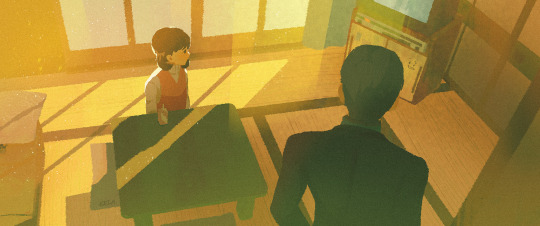
good morning
#persona 4#p4#p4g#yu narukami#nanako dojima#this game is such a product of its time i feel like i'm on neopets#i just finished april! :-0
2K notes
·
View notes
Text



when i live in VTMB world i will eat the cereal COOOT OHOCULO and drink Liquid DemonSeed while reading my favorite magazines DEAD BIRD, Worm, and chin
#there are so many good made up/edited ad and product labels in this game#still havent started my 2nd playthrough yet 2nite still sifting through my screenshots#haley plays VTMB
11K notes
·
View notes
Text
Building out Spudliminal’s Production
Introduction
Over the past eight weeks, my production team of seven has been working on our game, "Spudliminal," formally known as "Hilbert's House." Players open their eyes as a limbless potato in a mysterious house where the rules of nature cease to exist. When exiting a room, you seem to reenter the same room but through another entrance. Although players return to the same room, entities within the space shift and bestow a new stumbling block the player must overcome to hopefully once in for all escape the room. The main objective is to escape the locked room using any of the provided tools given, either through completing various puzzles, pure will, or luck.
Team Makeup
As a generalist programmer, my role on Spudliminal has been working on assorted physics mechanics, particle effects, and shaders to appeal to one of the game's core pillars, absurdity. Some features I worked on were: smoke shader & VFX, water shader, buoyancy, mesh deformation via the squish mechanic, liquid in containers shader, etc. Like myself, my preoccupied team is aspiring to complete Spudliminal's minimal viable product (MVP) for the Greenlight showcase, with each discipline specializing in one unique role on the team. My current team buildup is:
One 3D-Environment Artist
One Character Artist
One Producer
One Narrative/Level Design Designer
One Sound Designer
One Systems & Tools Programmer
One Generalist Programmer (Me)
With my team's current makeup, build status, and project scope, we are on track to meet the standards of a minimal viable product within two weeks from today.
Challenges
Some of the challenges my team and I encountered:
Integrating mechanics into puzzles and core gameloop
Balancing physics systems
Balancing frustration with puzzles
Balancing narrative elements in a sandbox-esque game
The player's third-person camera
Redefining scope
To tackle integrating mechanics into puzzles and the core gameloop, the player acquires an ability they unlock through solving one of the room's various puzzles. That unlocked ability allows them to escape the room. In our second level, the player will have to utilize the unlocked ability in level one to complete various steps in that variation of the room's puzzles. Physics systems are difficult to balance; The core challenge Spudliminal carries is playing as a potato (so limited movement and control). To counter frustration, we allowed players to have some air control while moving through air and water. Smoothing out physics mechanics allows puzzle completion to go smoother, along with the introduction of the narrative system implemented during sprint 5, to give context to the world and hints on how to solve puzzles. Although, Spudliminal has a narrative through a non-playable character existing within the room, making dialogue options keeps the game's sandbox-esque aesthetic intact and appeals to story game players. One of the biggest challenges is getting the third-person camera that follows and looks at the player to feel right and yet not annoying to play. Game testers often comment the camera, at first, is satisfying as it bumps with the player, but after a while of playing, the moving camera gets unfun and irritating.
Going Forward
To ensure that my production team and I are satisfied with the product we are presenting during Greenlight, I will do the following:
Communicate any struggles encountered earlier during sprints focused on feature development. Discussion issues earlier on during a sprint helps the team redesign future sprint formats for an accurate portrayal of the current state of progress.
Establish boundaries for any possible workarounds for features out of scope for an individual but essential to the completion of the minimal viable product; Partaking in-studio collaboration "help" sessions are an example of workarounds that I could utilize.
Lastly, continue working on features in my personal set production work session. Finishing the work I promised my team keeps everyone on track for the sprint goal and is one step closer to completing the minimal viable product.
0 notes
Text


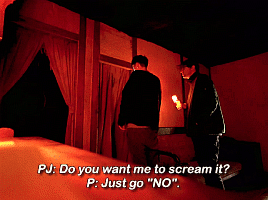

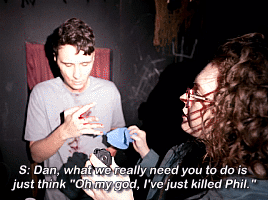
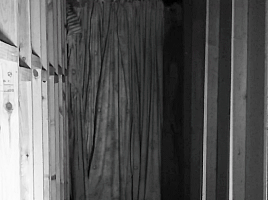

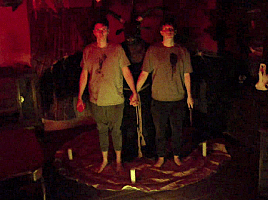
SLIME
Behind The Scenes vs Final Shot
#LOVED the bts video#makes sense that we got one for Slime; it was a literal full-fledged production#would've been a waste if we hadn't#dan and phil#dnp#kickthepj#dan and phil crafts#danandphilcrafts#dapc#dpgdaily#dan and phil games#danandphilgames#dapg#dapgames#dnpgames#daniel howell#phil lester#amazingphil#my stuff#my gifs#this gifset is not perfect but i'm learning over time lmao
571 notes
·
View notes
Note
In regard to the vertical slice. Do studios work on/produce it to pitch a game or is it used as a milestone to reassure the money people that the game is progressing? (or both)?

Both. The vertical slice is a big milestone in a game's development because it shows the entire game coming together in a cohesive play experience. It typically signals the end of preproduction and the transition to production - we're no longer going to spend time coming up with any more major new ideas for game systems because we're committing to what we have and building those systems out. The vertical slice (sometimes also called First Playable) is our milestone to showcase all of our work so far.
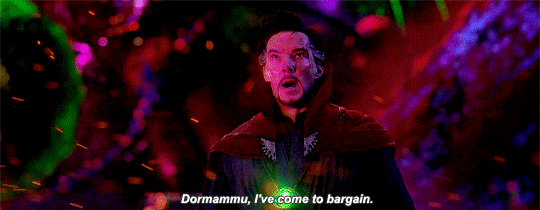
Because it's a showcase, the vertical slice is an excellent demo to pitch to executives and publishers. Since it shows all of the major systems in the game working together, it naturally answers most questions about how the game will play. The executives/publishers can get a strong idea of what the finished game will be like, which gives them sufficient context to decide whether to fund the rest of the game's development (from production to ship and possibly beyond). This also gives them a good idea of how much longer the game will take to build, how the game will fit in with the rest of the publisher's release schedule, and how it will sell.

Similarly, the vertical slice also serves as a proof-of-concept for an internal project and used to get the green light for continued development. Most publishers won't fully fund projects from inception to completion unless they are well-established franchises (e.g. Call of Duty, Pokemon, Madden, etc.). What's more likely to happen is that they fund initial prototypes for several new game ideas, then approve the more promising ones and cull the rest. Internal projects go through these "green light" meetings where the executives assess development progress and determine whether development will continue. The vertical slice is an important green light showcase for exactly that reason - entering production requires a significant increase in workforce to build the rest of the game out, so the vertical slice is a big financial commitment.
[Join us on Discord] and/or [Support us on Patreon]
Got a burning question you want answered?
Short questions: Ask a Game Dev on Twitter
Long questions: Ask a Game Dev on Tumblr
Frequent Questions: The FAQ
#vertical slice#green light#game publishing#executive demo#how things work#the business of video games#game production
36 notes
·
View notes
Text
OUR MOLE GAME IS ON STEAM ?!?!?!?
YEAH! We got our game put onto STEAM - and with the release coming up NEXT MONTH?!?!? You do NOT want to miss this one!!!!

#game#game production#indie game#indie games#mole#mole interest#video games#free game#party games#steam#itch.io
3 notes
·
View notes
Text
Neil Josten does the most bizarre side quests ever.
Fly to other part of the country to cheat-chat with mafiosi Uncle? Why not
Demonise and manipulate FBI while eating a take out? Regular evening
Order a murder for another rapist, because fuck anyone who hurts Jean? FUCK YEAH
Share philosophy that he learned from his found family and boyfriend? Yes, pleaaase
#It was quiet a productive evening#but he still misses court#neil josten#neil josten the man that you are#all for the game#aftg#aftg neil#the sunshine court#tsc#tsc spoilers
740 notes
·
View notes